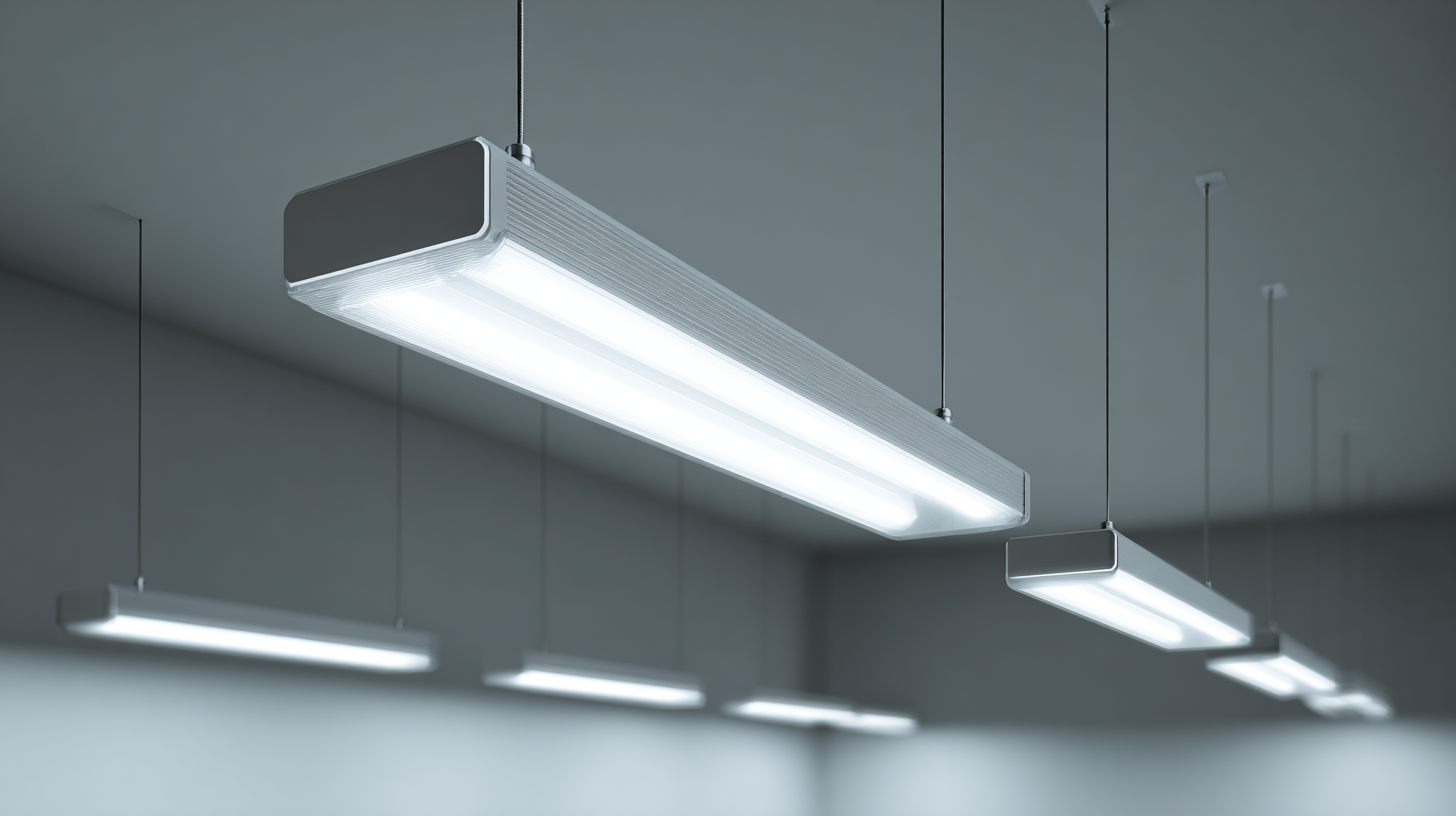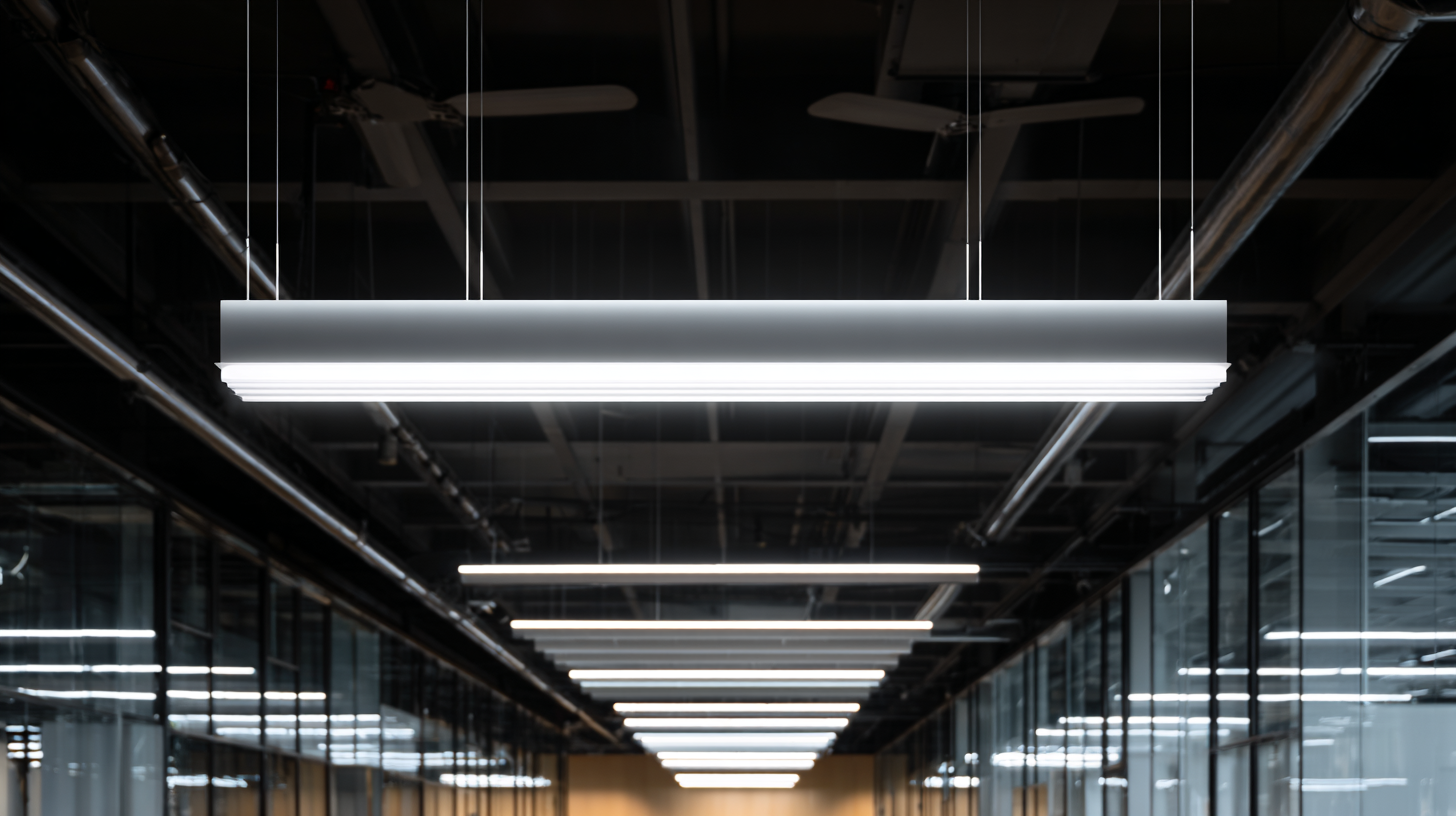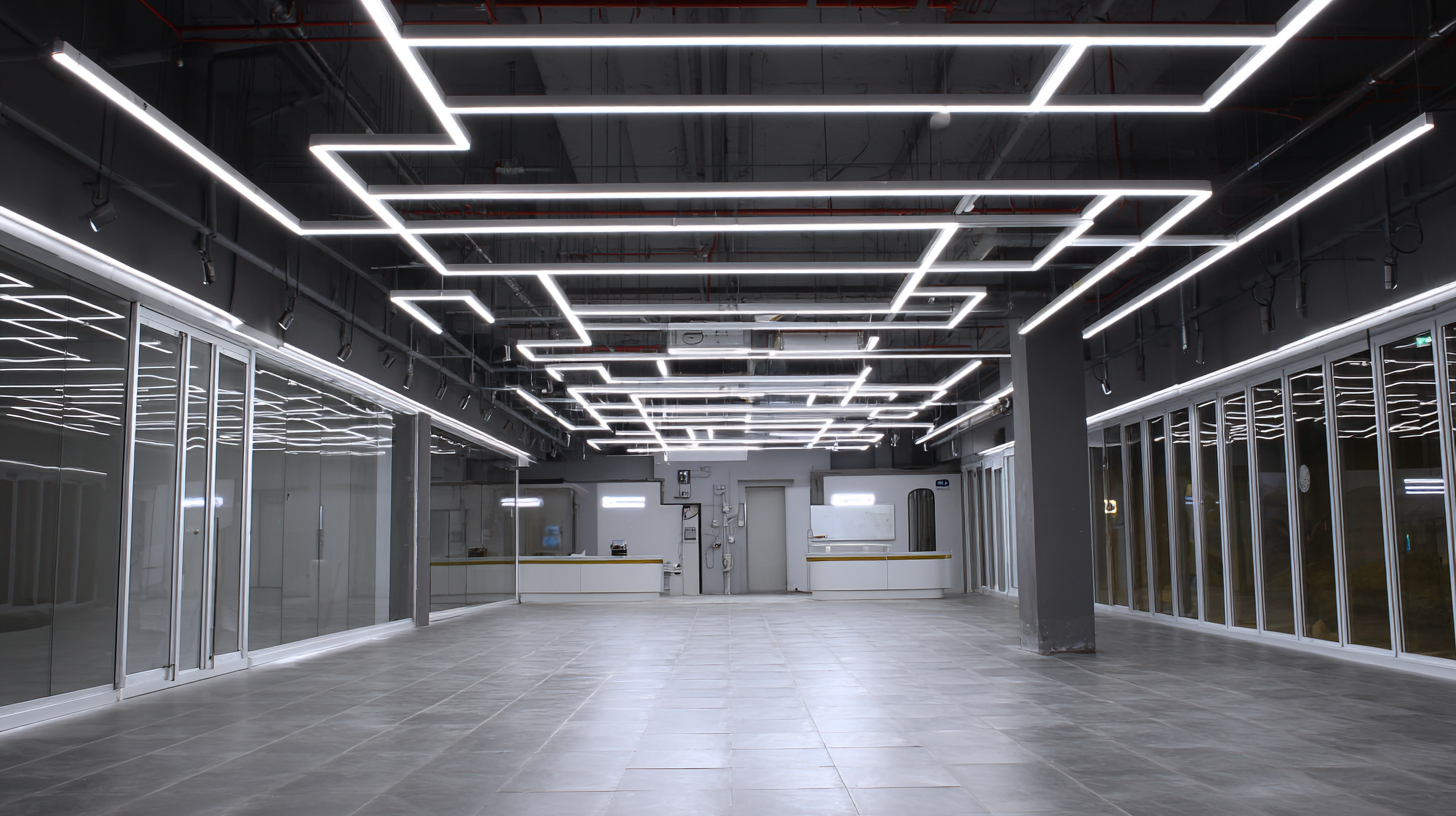The Future of Innovative Luminaire Solutions for Commercial Lighting
As the realm of commercial lighting continues to evolve, the exploration of innovative luminaire solutions becomes increasingly vital. The demand for energy efficiency, sustainability, and smart technology integration is driving the industry to seek alternatives that not only enhance aesthetic appeal but also optimize functionality. Luminaire commercial lighting systems are at the forefront of this transformation, presenting opportunities for businesses to reduce operational costs while creating inviting environments. This blog will delve into the emerging trends and technologies that are shaping the future of commercial lighting, highlighting alternative luminaire designs and their potential to revolutionize spaces from offices to retail environments.

By embracing these advancements, businesses can strategically position themselves in a competitive market, ensuring they meet the needs of both consumers and environmental standards.
Innovative Lighting Technologies: Shaping the Commercial Landscape of 2025
As we look ahead to 2025, the commercial lighting landscape is set to transform dramatically through innovative lighting technologies. These advancements promise not only to enhance aesthetic appeal but also to significantly improve energy efficiency and sustainability. Smart lighting solutions, driven by the Internet of Things (IoT), will empower businesses to create dynamic environments that adapt to their needs in real-time. From intuitive sensor systems that adjust brightness based on occupancy to integrated controls that synchronize with natural daylight, commercial spaces will become more responsive and user-friendly.
Moreover, the integration of human-centric lighting will play a crucial role in shaping workplaces and retail environments. By prioritizing well-being and productivity, these lighting systems will mimic natural light patterns, positively affecting employees' moods and health. This shift towards emotionally intelligent lighting will also provide retailers with the ability to enhance customer engagement through tailored experiences, creating inviting atmospheres that encourage spending. As the commercial sector embraces these innovative luminaire solutions, the future of lighting will not only illuminate spaces but will also inspire and elevate the human experience in profound ways.
Sustainability and Energy Efficiency in Future Luminaire Designs
As we look towards the future of innovative luminaire solutions for commercial lighting, the focus on sustainability and energy efficiency is paramount. The design of future luminaires is shifting towards incorporating eco-friendly materials and advanced technology. LED technology, for instance, not only provides high-quality illumination but also significantly reduces energy consumption compared to traditional lighting solutions. This transition not only supports environmental goals but can also result in substantial cost savings for businesses over time.
Tips for enhancing sustainability in your commercial lighting include prioritizing LED fixtures and utilizing smart lighting controls that adjust brightness based on occupancy. Integrating renewable energy sources, such as solar power, can further enhance energy efficiency. It's also essential to consider the lifecycle of the products; choosing fixtures designed for longevity and recyclability helps minimize waste.
Incorporating smart technology can optimize energy usage and create a more responsive lighting environment. For instance, sensors can detect natural light levels and automatically adjust artificial lighting, reducing energy waste. As businesses increasingly prioritize sustainability, these innovative approaches to luminaire design will play a critical role in creating commercial spaces that are not only stylish but also environmentally conscious.
The Future of Innovative Luminaire Solutions for Commercial Lighting
This chart illustrates the projected energy efficiency improvements and sustainability scores of various luminaire solutions over the next five years. The data represents the estimated percentage increase in efficiency and sustainability attributes.
Integration of Smart Technologies in Commercial Lighting Solutions
The integration of smart technologies in commercial lighting solutions marks a significant shift in how businesses approach their lighting needs. With the advent of IoT (Internet of Things), lighting systems can now be controlled remotely, allowing for greater flexibility and energy efficiency. Smart technologies enable businesses to adjust lighting levels based on occupancy, time of day, and even daylight availability, which not only enhances comfort for employees and customers but also leads to substantial cost savings on energy bills.
Moreover, the adoption of smart lighting solutions goes beyond mere convenience and efficiency. Advanced features such as automated color tuning and adaptive lighting can create the ideal atmosphere for various settings, whether it's a retail environment designed to encourage sales or a workspace aimed at boosting productivity. As sensors and AI continue to evolve, businesses can seamlessly integrate data analytics into their lighting systems, allowing for real-time adjustments that respond dynamically to changing conditions. The future of commercial lighting is illuminated by these innovative solutions, transforming spaces into smart environments that prioritize both functionality and aesthetics.
Trends in Aesthetic Design: Merging Functionality with Visual Appeal
As the commercial lighting industry continues to evolve, the integration of aesthetic design with functionality is becoming increasingly crucial. According to a report by ResearchAndMarkets, the global smart lighting market is expected to reach $75 billion by 2026, highlighting a growing demand for innovative luminaires that not only provide illumination but also enhance the overall ambiance of spaces. This trend emphasizes the importance of visual appeal in lighting solutions, as businesses recognize that well-designed lighting can significantly influence consumer behavior and workplace productivity.
Architects and designers are now prioritizing the aesthetics of luminaire solutions, focusing on sleek lines, modern materials, and customizable features. Data from the Illuminating Engineering Society indicates that over 70% of architects consider lighting as a key element in the overall design of commercial spaces. Furthermore, with the rise of remote work and hybrid environments, companies are investing in lighting systems that not only complement interior design but also support well-being through features such as circadian lighting and adaptability to different tasks. This merger of functionality with visual appeal is setting the stage for a new era in commercial lighting, where creativity meets practicality.

The Role of AI and IoT in Enhancing Commercial Lighting Systems
The commercial lighting industry is undergoing a significant transformation, fueled by advancements in Artificial Intelligence (AI) and the Internet of Things (IoT). These technologies are enhancing lighting systems, making them smarter and more efficient than ever before. AI algorithms can analyze vast amounts of data from lighting sensors, adjusting brightness and color temperature based on occupancy, time of day, or even the activities being performed in a space. This level of adaptability not only improves energy efficiency but also creates a more comfortable and productive environment for occupants.

Simultaneously, IoT connectivity allows lighting systems to communicate with other devices within a building. This interconnectedness means that lighting can be integrated with HVAC systems, security measures, and even occupancy sensors to create a holistic approach to facility management. For example, if a meeting room is unoccupied, the IoT-enabled lighting system can automatically dim or turn off the lights, saving energy.
Furthermore, remote monitoring capabilities enable facility managers to track the performance of their lighting systems in real-time, allowing for proactive maintenance and a reduction in operational costs. Together, AI and IoT are revolutionizing commercial lighting, paving the way for more sustainable and intelligent environments.
